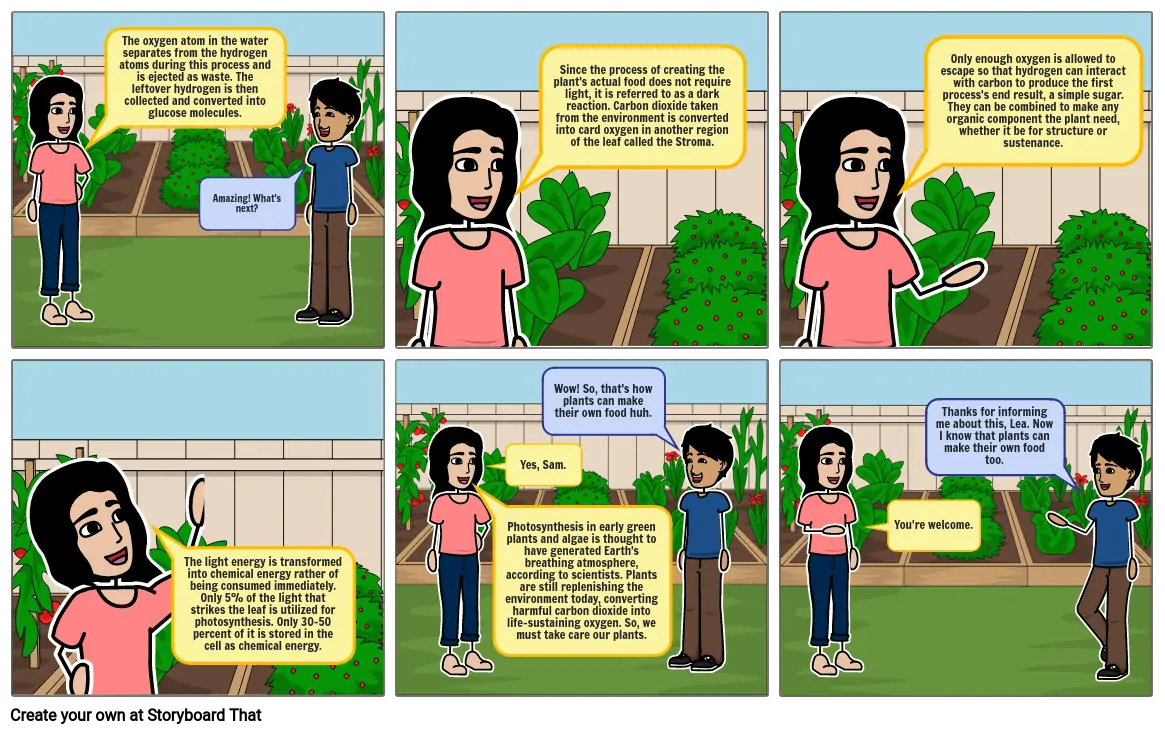The Process on How Plants can Make their Own Food

Texte du Storyboard
- The oxygen atom in the water separates from the hydrogen atoms during this process and is ejected as waste. The leftover hydrogen is then collected and converted into glucose molecules.
- Amazing! What's next?
- Since the process of creating the plant's actual food does not require light, it is referred to as a dark reaction. Carbon dioxide taken from the environment is converted into card oxygen in another region of the leaf called the Stroma.
- Only enough oxygen is allowed to escape so that hydrogen can interact with carbon to produce the first process's end result, a simple sugar. They can be combined to make any organic component the plant need, whether it be for structure or sustenance.
- The light energy is transformed into chemical energy rather of being consumed immediately. Only 5% of the light that strikes the leaf is utilized for photosynthesis. Only 30-50 percent of it is stored in the cell as chemical energy.
- Photosynthesis in early green plants and algae is thought to have generated Earth's breathing atmosphere, according to scientists. Plants are still replenishing the environment today, converting harmful carbon dioxide into life-sustaining oxygen. So, we must take care our plants.
- Yes, Sam.
- Wow! So, that's how plants can make their own food huh.
- You're welcome.
- Thanks for informing me about this, Lea. Now I know that plants can make their own food too.
Plus de 30 millions de storyboards créés

